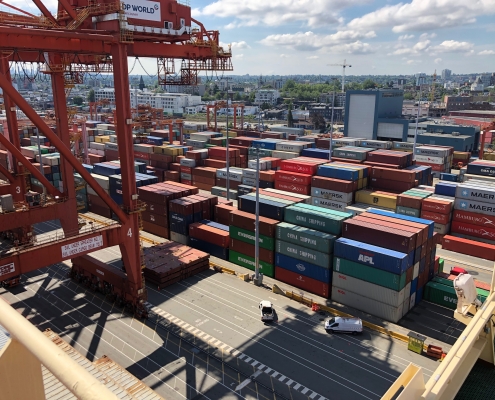Private LTE for Enabling Smart Ports
October 1, 2019 — The shipping industry is embracing new technologies to increase productivity, enhance safety, automate, track assets, and other applications to improve its operation. As hubs for global trade activity, sea ports are at the center of this technology adoption trend and constantly looking to improve operational efficiency and processing capacity. A recent report by TMR projects the value of global digital transformation of the maritime freight market to reach ~US$ 38.4 billion by 2027. IoTNowTransport.com notes that – “The digital transformation of maritime freight has drastically improved the efficiencies of marine freight companies by enabling the integration of artificial intelligence technologies, blockchain, Internet of Things, and robotics with shipping models.”
Implementation of a dedicated wireless network at sea ports can be used for digital transformation and to facilitate adoption of new digital technologies. All sorts of applications can be deployed, from connecting port assets to monitoring harbour conditions, or connecting wireless surveillance to enabling self-driving vehicles. One technology leading the way in implementing dedicated wireless networks is Private LTE. Industry leading supplier Qualcomm defines a Private LTE network as one tailored to serve a limited geographic area with optimized services using dedicated equipment.
Private LTE networks can be deployed by enterprises or service providers. Licensed or unlicensed spectrum can be used depending on regional availability. In the United States, access to CBRS shared spectrum or LTE Band 48 will enable organizations to deploy Private LTE networks. By deploying its own LTE network, an enterprise can ensure appropriate coverage, reliability and predictability within its operational location. The Private LTE Market size is set to exceed USD 11 billion by 2024; according to a new research report by Global Market Insights, Inc.
Smart Port Applications
Sea ports are prime locations for deploying new technologies to establish new levels of operational intelligence through increased connectivity, automation and security. By deploying Private LTE, sea ports can increase machine-to-machine (M2M) / Internet of Things (IoT) connectivity and power new digital processes and applications. The result is a Smart Port, or Port 4.0, in recognition of Industry 4.0 type technology deployments.
Smart Port applications that can be delivered by Private LTE include:
- Real-time video & analytics on cranes
- Asset tracking for goods, vehicles, and workers
- Video surveillance for port security, including the use of drones
- Adoption of self-driving vehicles or remote control technology
- Sensors for weather and harbor conditions
- Secure communications and collaboration tools
Deploying Private LTE
Private LTE networks utilize the same basic architecture as commercial LTE networks deployed by mobile network operators (MNO’s). There are three key network elements involved: core network equipment, radio basestation equipment (LTE eNodeB) and user devices (smart-phones, sensors, gateways, etc…). In addition to user devices, or connected devices, and application integration capabilities can be used to enable end-to-end solutions and platforms.
The core network (4G LTE EPC) in a Private LTE network authenticates and tracks all the devices connected to the network it is managing. Some of its tasks include: user authentication, allocating IP addresses, managing traffic policies and providing connectivity to external data networks. Options for a scalable 4G LTE core network platform are available for easy deployment based on the number of devices or users to be supported, plus the traffic throughput required by the network.
Wireless connectivity in a Private LTE network is provided by radio basestation equipment called eNodeB’s. Each of these devices connect to RF antennas placed in the direction of targeted indoor and outdoor coverage locations. To be able to operate an eNodeB, the network operator will need access to frequency spectrum. In the United States, shared spectrum is available now with the recent approval of 3.5 GHz CBRS Band.
Private LTE networks can support a multitude of device types and services based on what’s available in the marketplace. This ranges from everyday smartphones, gateways and routers to more application specific devices like surveillance cameras, sensors and asset trackers. In addition to these devices, machinery such as remote control manufacturing equipment and autonomous vehicles can also leverage this network.
If you’re considering a Private LTE network for your operations, contact the Star Solutions team and set up a discussion.




